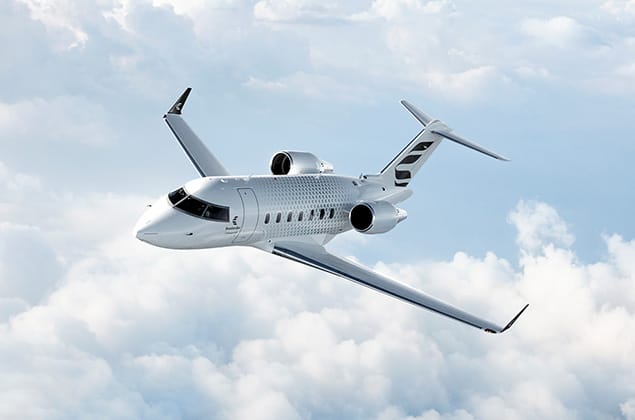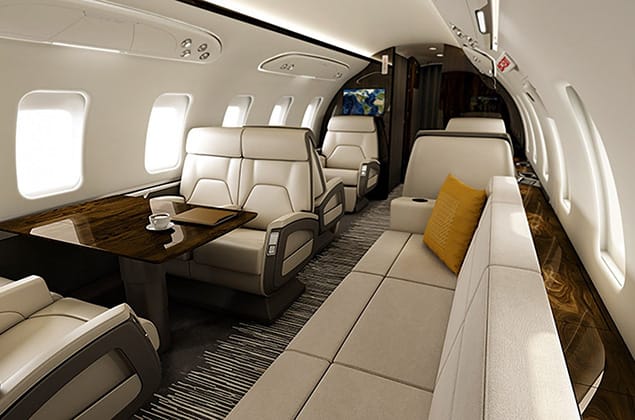Challenger 650 Specifications & Booking
Available Empty Leg Flights on the Challenger 650
Teterboro, Teterboro Airport (TEB), NJ, US
Hamilton, L.F. Wade International International (BDA), BM
04.12.2025
Challenger 650
12
Stockholm, Bromma (BMA), SE
Malaga, Málaga (AGP), ES
04.12.2025
Challenger 650
12
Helsingborg, Ängelholm-Helsingborg (AGH), SE
Malaga, Málaga (AGP), ES
05.12.2025
Challenger 650
12
Hamilton, L.F. Wade International International (BDA), BM
Teterboro, Teterboro Airport (TEB), NJ, US
06.12.2025
Challenger 650
12
La Romana, Casa De Campo International (LRM), DO
Teterboro, Teterboro Airport (TEB), NJ, US
14.12.2025
Challenger 650
12
Bozeman, Bozeman Yellowstone Intl (BZN), MT, US
Teterboro, Teterboro Airport (TEB), NJ, US
22.12.2025
Challenger 650
12
St Maarten Is., Princess Juliana International (SXM), SX
Teterboro, Teterboro Airport (TEB), NJ, US
27.12.2025
Challenger 650
12
Miami, Opa-locka Executive (OPF), FL, US
Teterboro, Teterboro Airport (TEB), NJ, US
30.12.2025
Challenger 650
12
Teterboro, Teterboro Airport (TEB), NJ, US
St Maarten Is., Princess Juliana International (SXM), SX
02.01.2026
Challenger 650
12
Overview of the Challenger 650
The Challenger 650 is a business jet manufactured by Bombardier Aerospace. It is a twin-engine, medium-range aircraft designed to transport up to eight passengers comfortably. The first flight of the Challenger 650 took place in 2011, and it received certification from Transport Canada in 2013.
Technical Specifications
The Challenger 650 has the following technical specifications:
- Dimensions: Length - 25.5 meters (83 ft 8 in), Wingspan - 20.4 meters (67 ft 1 in), Height - 6.9 meters (22 ft 7 in)
- Weight: Empty weight - 13,200 kg (29,100 lb), Maximum takeoff weight - 23,500 kg (51,800 lb)
- Engines: Two General Electric CF34-3B engines, each producing 6,440 pounds of thrust
- Performance: Maximum speed - Mach 0.82 (647 mph), Range - 4,000 nautical miles (7,408 km), Cruising altitude - 45,000 feet (13,716 meters)
- Capacity: Passengers - up to eight, Cargo - up to 1,050 kg (2,310 lb), Crew - two
Design and Features
The Challenger 650 features a unique design that combines aerodynamic efficiency with interior comfort. The aircraft has a range of innovative features, including an advanced avionics system, a state-of-the-art cabin management system, and a high-altitude performance package.
History and Development
The development of the Challenger 650 began in the early 2000s as Bombardier looked to replace its aging Learjet line with a new, more modern business jet. The program faced several challenges, including delays and increased costs due to the global economic downturn. However, the aircraft made its first flight in June 2011 and received certification from Transport Canada in January 2013.
- Key milestones: First flight - June 29, 2011; Certification - January 11, 2013; Entry into service - March 2013
- Challenges faced during development: Delays, increased costs due to global economic downturn
- Significant upgrades or variants: None noted
Operational Use
The Challenger 650 is used by a range of operators around the world. It is popular among business jet owners and charter operators, as well as with corporate flight departments.
- Airlines or organizations that operate it: None noted
- Popular routes or missions: Domestic and international business travel, charter flights
- Role in aviation history: None noted
Interesting Facts
Here are a few interesting facts about the Challenger 650:
- Unique design choice: The aircraft features a unique "rear-loading" cargo door that allows for easy loading and unloading of luggage and equipment.
- Famous flights or events: None noted
- Pop culture appearances: None noted
Frequently Asked Questions
What makes the Challenger 650 unique?
The Challenger 650 is unique due to its advanced avionics system, state-of-the-art cabin management system, and high-altitude performance package.
How much does the Challenger 650 cost?
The cost of a Challenger 650 can range from $25 million to over $30 million, depending on the configuration and customization options chosen by the buyer.
What is the range of the Challenger 650?
The Challenger 650 has a range of approximately 4,000 nautical miles (7,408 km), making it suitable for long-range business travel and charter flights.
Which airlines operate the Challenger 650?
The Challenger 650 is operated by several major airlines and charter operators around the world. These include NetJets, Flexjet, and Wheels Up, among others.
Is the Challenger 650 still in production?
The Challenger 650 is no longer in production, as Bombardier has replaced it with newer models such as the Global 7500 and Global 8000. However, many existing Challenger 650 aircraft are still in service and being operated by a range of operators around the world.





